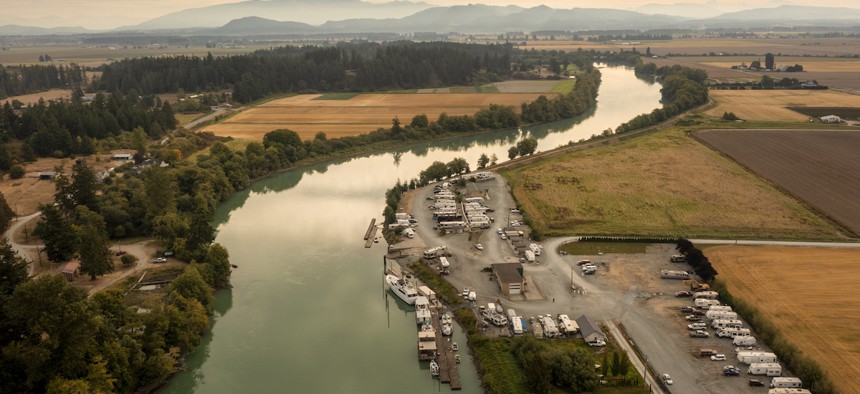Fish and Wildlife to deploy drones in battle against invasive plants

Edmund Lowe Photography/Getty Images
To protect native plants and reduce equipment impact on the environment, the Washington Department of Fish and Wildlife will deploy aerial drones to spray invasive plants with herbicides.
To eradicate invasive plants growing in the Skagit River delta, the state’s Department of Fish and Wildlife plans to dispatch an herbicide-spraying aerial drone.
The project is expected to begin next week and run into June and, according to an official involved, is possibly the first time the department has applied herbicide this way.
“To my knowledge, WDFW has never sprayed with a drone,” David Heimer, the agency’s noxious weed coordinator, said in an email.
While Fish and Wildlife owns drones, it has brought on a contractor to complete the work at the Skagit site.
The department says the spraying will target a select area at the mouth of the river that is inaccessible to ground equipment, and that a drone will be used to map the zone and locate the targeted weeds before applying the herbicide. Spraying would occur at low tide, in daylight, and the aircraft would be flying only a few feet above the vegetation when it’s in progress.
Plants the department is trying to kill include invasive cattail and reed canarygrass. Fish and Wildlife will spray formulations of imazapyr on the cattail and glyphosate on reed canarygrass, Heimer said. The department will carry out the work under an aquatic noxious weed permit.
An upside of using a drone is it can be used to collect images of where weeds and native plants are located and then precisely target spraying to problem areas.
Fish and Wildlife owns aerial drones and uses them for various mapping and planning projects.
Heimer said his noxious weed team recently purchased drones for both mapping and spraying drones. Agency staff are getting licensed to fly them. Heimer explained that registering the spray drone with the Federal Aviation Administration is a lengthy affair and there are no plans to use it until the process is complete.
For the Skagit project, Altitude Agri Services, LLC will handle the drone work using its own aircraft. Heimer said working with the company will give the department a chance to get the work done in the near term and learn more about how drone spraying is done.
The drone the company plans to use for spraying weighs nearly 60 pounds, is about 9 feet wide propeller-to-propeller and has a 30-liter spray tank, according to its manufacturer.
Heimer said there is another drone project planned, to treat yellow starthistle, in the W.T. Wooten Wildlife Area, near Pomeroy, Washington, in the state’s southeast corner.
“Drones will allow us to access sites where our equipment can’t go and using them will reduce our equipment footprint on the landscape,” Heimer added. “In addition, not having to put our crews in difficult-to-access sites to apply herbicide will improve safety for them.”
Washington State Standard is part of States Newsroom, a network of news bureaus supported by grants and a coalition of donors as a 501c(3) public charity. Washington State Standard maintains editorial independence. Contact Editor Bill Lucia for questions: info@washingtonstatestandard.com. Follow Washington State Standard on Facebook and Twitter.






